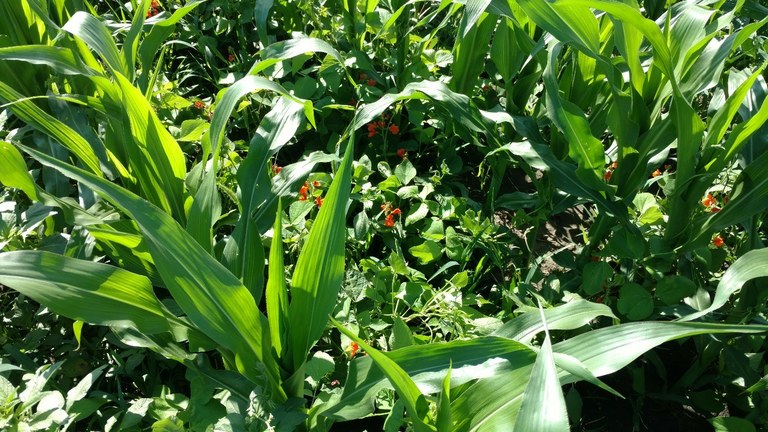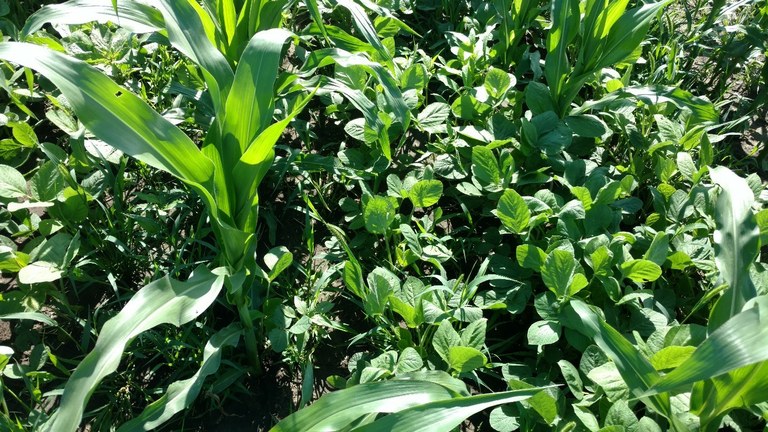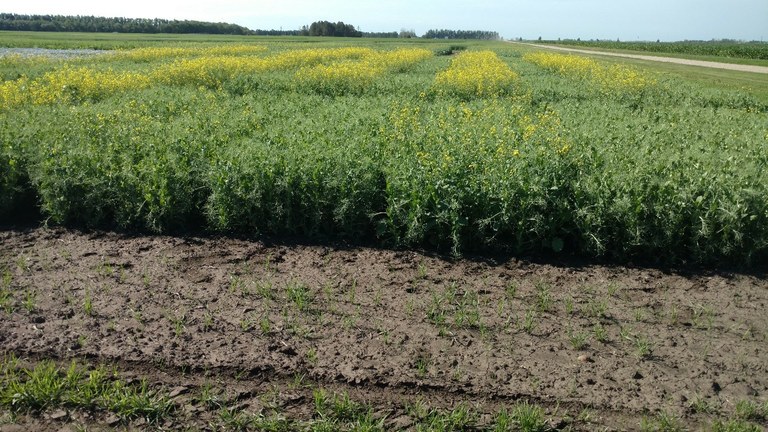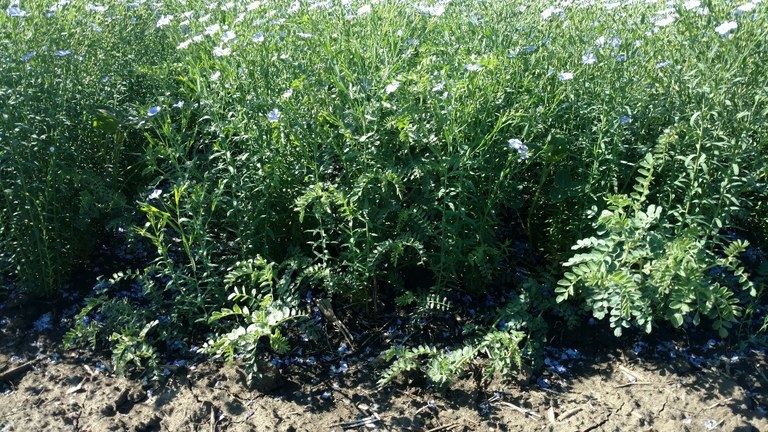What is the CREC doing with Intercropping?
The CREC has had a long history of studying intercropping, with large emphasis on different crop combinations in the early 90s. Over the last several years this topic has stormed back with a vengeance. One of the trending versions of intercropping is harvesting two cash crops at the same time. Common examples include flax with chickpea, canola or mustard with field pea, faba bean with a cereal, and flax with a cereal. The idea is that with two crops 1) there will be less yield from each crop, but the combined yield will be higher than a monocrop; 2) there will be greater biological diversity in the system above and below ground; 3) there may be less inputs required. Common problems include difficulty in seeding multi-crops with current equipment, cost or availability of separating equipment for harvested grain, and harvest synchrony. The goal is to intensify production per acre and maintain or improve soil health. This is one topic in which more testing is being done on farm than by traditional research.
The CREC did conduct several trials this past growing season to evaluate some of the different combinations. In particular, researchers have been looking into field peas with oats, field peas with canola, flax with chickpeas, wheat with clover (as a cover), and silage corn with legumes. The most common treatment in the trials is seeding rates of the crops. Even though 2018 was a very dry summer, several treatments in each study were advantageous compared to monocropping, at least from a production standpoint, with as much as a 30% increase in per acre production. As is stands, we still have a lot to learn about intercropping. Many of these studies will be continuing in 2019. Once we get multi-year data, we can start looking at the economics of intercropping.
For now, here are some nice pictures from some of our trials:
 Silage corn and scarlet runner bean intercrop.
Silage corn and scarlet runner bean intercrop.
 Silage corn and soybean intercrop.
Silage corn and soybean intercrop.
 Field pea and canola seeding rates in an intercrop.
Field pea and canola seeding rates in an intercrop.
 Flax and chickpea intercrop.
Flax and chickpea intercrop.
Mike Ostlie, Ph. D.
Mike.Ostlie@ndsu.edu
Research Agronomist


